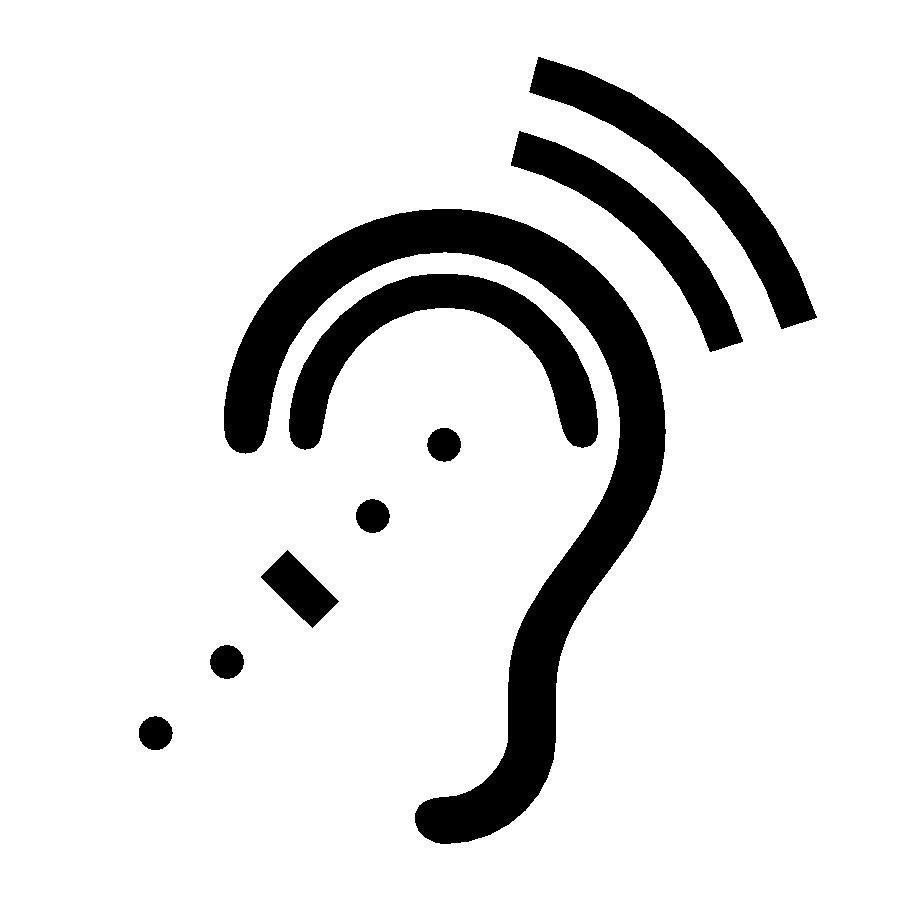Find Assisted Listening Devices in Central Ohio
What are assistive listening devices?
The terms assistive listening device or assistive listening technology can refer to any device that helps a person with hearing loss to communicate. These terms often refer to devices that help a person to hear and understand what is being said more clearly or to express thoughts more easily. With the development of digital and wireless technologies, more and more devices are becoming available to help people with hearing disorders to communicate more meaningfully and participate more fully in their daily lives.
What types of assistive listening devices are available?
Several types of ALDs are available to improve sound transmission for people with hearing loss. Some are designed for large facilities such as classrooms, theaters, places of worship, and airports. Other types are intended for personal use in small settings and for one-on-one conversations. All can be used with or without hearing aids or a cochlear implant. ALD systems for large facilities include hearing loop systems, frequency-modulated (FM) systems, and infrared systems.
What is a hearing loop system?
A hearing loop system is an assistive listening system (ALS) that transfers sound – from a microphone or TV – directly to your hearing device or cochlear implant, via a tiny and inexpensive telecoil (t-coil) receiver.
Put another way, a looping system uses an electromagnetic field to deliver sound directly to certain types of hearing devices.
Some benefits of hearing loop systems:
- Works with your existing hearing aids – no extra purchases or devices required
- Delivers customized sound specific to the requirements of your own hearing loss
- Eliminates background noise
- Reduces annoying wall bounce or echo
- Provides zero sound distortion
- Can be installed in your home, house of worship, or gathering places such as those found in libraries and at senior citizen meeting rooms
- Can be installed in public transit venues such as airports, subways, train stations and tour buses
- Can be installed in live theatres, motion picture theatres and performance venues
- Is more hygienic since you use your own hearing aids and not devices used previously by others
- Is easily available – no need to wait in lines to reserve a device prior to a performance or to return devices after a performance
With a looping system, it’s as if you’re standing right next to the speaker, even if you’re sitting in the back of the room. Best of all, no matter where they’re installed, you control the sound.
What’s a telecoil?
A telecoil, also called a t-coil, is a coil of wire that is installed inside many hearing aids and cochlear implants to act as a miniature wireless receiver. It was originally designed to make sounds clearer to a listener over the telephone. It also is used with a variety of other assistive listening devices, such as hearing loop (or induction loop) systems, FM systems, infrared systems and personal amplifiers.
The telecoil works by receiving an electromagnetic signal from the hearing loop and then turning it back into sound within the hearing aid or cochlear implant. This process eliminates much of the distracting background noise and delivers sound customized for one’s own need. For people who are hard-of-hearing who do not have a telecoil-equipped hearing aid or cochlear implant, loop receivers with headsets can provide similar benefits but without the customized or “corrected sound” feature that matches one’s hearing loss pattern.
Many cochlear implants have a telecoil built into the sound processor, or can use an external telecoil accessory with both hearing aid compatible telephones and public loop systems. A simple switch or programming maneuver performed by the user activates this function.
FM systems use radio signals to transmit amplified sounds. They are often used in classrooms, where the instructor wears a small microphone connected to a transmitter and the student wears the receiver, which is tuned to a specific frequency, or channel. People who have a telecoil inside their hearing aid or cochlear implant may also wear a wire around the neck (called a neckloop) or behind their aid or implant (called a silhouette inductor) to convert the signal into magnetic signals that can be picked up directly by the telecoil.
FM systems can transmit signals up to 300 feet and are able to be used in many public places. However, because radio signals are able to penetrate walls, listeners in one room may need to listen to a different channel than those in another room to avoid receiving mixed signals. Personal FM systems operate in the same way as larger scale systems and can be used to help people with hearing loss to follow one-on-one conversations.
FM Systems
Infrared Systems
Infrared systems use infrared light to transmit sound. A transmitter converts sound into a light signal and beams it to a receiver that is worn by a listener. The receiver decodes the infrared signal back to sound. As with FM systems, people whose hearing aids or cochlear implants have a telecoil may also wear a neckloop or silhouette inductor to convert the infrared signal into a magnetic signal, which can be picked up through their telecoil.
Unlike induction loop or FM systems, the infrared signal cannot pass through walls, making it particularly useful in courtrooms, where confidential information is often discussed, and in buildings where competing signals can be a problem, such as classrooms or movie theaters. However, infrared systems cannot be used in environments with too many competing light sources, such as outdoors or in strongly lit rooms.
Personal amplifiers are useful in places in which the above systems are unavailable or when watching TV, being outdoors or traveling in a car. About the size of a cell phone, these devices increase sound levels and reduce background noise for a listener. Some have directional microphones that can be angled toward a speaker or other source of sound. As with other ALDs, the amplified sound can be picked up by a receiver that the listener is wearing, either as a headset or as earbuds.
Personal Amplifiers
What devices are available for communicating by telephone?
For many years, people with hearing loss have used text telephone or telecommunications devices, called TTY or TDD machines, to communicate by phone. This same technology also benefits people with speech difficulties. A TTY machine consists of a typewriter keyboard that displays typed conversations onto a readout panel or printed on paper.
Callers will either type messages to each other over the system or, if a call recipient does not have a TTY machine, use the national toll-free telecommunications relay service at 711 to communicate. (See Telecommunications Relay Services for more information.) Through the relay service, a communications assistant serves as a bridge between two callers, reading typed messages aloud to the person with hearing while transcribing what’s spoken into type for the person with hearing loss.
With today’s new electronic communication devices, however, TTY machines have almost become a thing of the past. People can place phone calls through the telecommunications relay service using almost any device with a keypad, including a laptop, personal digital assistant and cell phone. Text messaging has also become a popular method of communication, skipping the relay service altogether.
Another system uses voice recognition software and an extensive library of video clips depicting American Sign Language to translate a signer’s words into text or computer-generated speech in real time. It is also able to translate spoken words back into sign language or text.
Finally, for people with mild to moderate hearing loss, captioned telephones allow you to carry on a spoken conversation, while providing a transcript of the other person’s words on a readout panel or computer screen as back-up.
What types of alerting devices are available?
Alerting or alarm devices use sound, light, vibrations or a combination of these techniques to let someone know when a particular event is occurring. Clocks and wake-up alarm systems allow a person to choose to wake up to flashing lights, horns or a gentle shaking.
Visual alert signalers monitor a variety of household devices and other sounds, such as doorbells and telephones. When the phone rings, the visual alert signaler will be activated and will vibrate or flash a light to let people know. In addition, remote receivers placed around the house can alert a person from any room. Portable vibrating pagers can let parents and caretakers know when a baby is crying. Some baby monitoring devices analyze a baby’s cry and light up a picture to indicate if the baby sounds hungry, bored or sleepy.
Researchers are developing devices that help people with varying degrees of hearing loss communicate with others. One team of researchers has developed a portable device in which two or more users type messages to each other that can be displayed simultaneously in real time. Another team is designing an ALD that amplifies and enhances speech for a group of individuals who are conversing in a noisy environment.
What research is being conducted on assistive technology?








